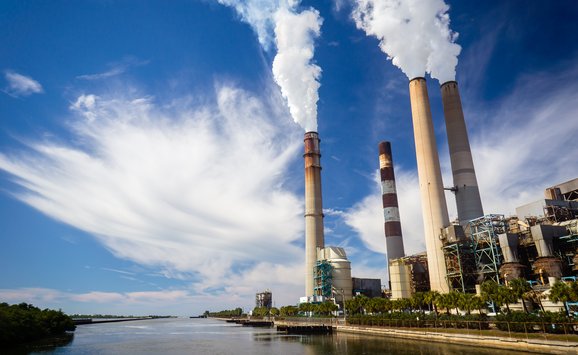A long-term assessment of resource adequacy is important as a basis for establishing the proper degree of urgency with which the population problem should be viewed. But it is a difficult topic because of our ignorance about the material content of vast regions of the earth and about the nature and timing of future technological developments.
Whether resources will or will not be adequate in the future also depends in large measure on our time horizon. If population and material economic growth were to continue without abatement, and if we rule out the possibility of importing materials and energy from outside the earth (or exporting people) an ever-increasing scale, it is certain that the earth would eventually run out of resources, environmental carrying capacity, or space. The second law of thermodynamics, the entropy law, makes this quite certain. Indeed, this same law makes it certain that even a constant rate of economic activity cannot be maintained forever, unless that level of activity is sufficiently low to permit mankind to live within the limits imposed by the flow of solar energy he is able to tap. The qualification is important, for the amount of solar energy received by earth is enormous relative to terrestrial stocks of energy. Hard to believe though it may be, the entire terrestrial stock of energy is estimated to be equal to only four days of sunlight. In principle, this could permit man to live for another five billion years (the remaining estimated active life of the sun) at a reasonably high standard of living, provided population growth ceased during the next century or so. But as a practical matter, with technologies and ways of life we can imagine evolving and spreading throughout the world in the foreseeable future, this indefinitely sustainable standard of living is probably significantly below the level at which most of humanity exists today. Technological breakthroughs may make it appear to be possible to continue growth forever. But this illusion arises from myopia. No amount of scientific knowledge can repeal the laws of nature; they can only postpone their consequences. No matter how closely we approach it, there is no such thing as a perpetual motion machine.
But knowledge that growth must eventually cease is of no practical significance by itself. Just how much time do we have? If we have hundreds to thousands of years, as the technological optimists believe, there room for nonresource considerations to play an important role in determining how forcefully measures to limit growth should be applied. In this case, it is easy to imagine policy makers deciding to continue to encourage economic growth while limiting family planning activities to those which help parents reduce the gap between desired and actual family size. On the other hand, if we on this earth, or at least on parts of it, have no more than, say, 50 to 150 years before these limits are approached too closely for comfort, as those who argue against reliance on technological "fixes" and new discoveries maintain, far more stringent policies are called for.
Comprehensive reviews of projected worldwide demands and estimates of reserves for individual natural resources were undertaken by the U.S. Bureau of Mines in 1970 and more recently by Resources for the Future. Concentrating on the next half century, these projections can be characterized as surprise-free and conservative in the sense that they assume no significant changes in tastes, technology, institutions, or relative prices, and fairly rapid increases in population and economic growth. The demands of the rest of the world are based more or less on an extrapolation of trends in consumption during the past two decades, while those for the United States are derived from a dynamic input-output model of that economy. Reserve estimates incorporate the judgment of experts about the world's "known and potential reserves," a term that includes concealed deposits for which there is specific geologic evidence and for which the specific location can be described, but which makes no allowance for ore in unknown structures or undiscovered districts, or for "paramarginal and submarginal reserves" which would require sizeable increases in prices to be considered commercially valuable.
Of the nineteen nonfuel minerals reviewed in the RFF study, worldwide reserves as now estimated appear inadequate in the cases of aluminum, lead, zinc, tungsten, and sulfur to meet the "high" projections of cumulative demand between now and the year 2000. By 2020, copper, manganese, nickel, molybdenum, and titanium would be added to this list. For example, worldwide consumption of copper, estimated at 7.4 million tons in 1968, is projected to be 20 to 39 million tons in 2000 and 37 to 116 million tons in 2020 (the differences between the high and low numbers indicating just how poor these estimates are), or in cumulative terms, 792 to 1,180 million tons for 1968-2000 and 2,277 to 4,974 million tons for 1968-2020. By contrast, the world's principal commercial resources of copper, in metal content, are estimated at 808 million tons.
But the significance of these findings differs considerably among minerals. Only modest price increases would be necessary to turn a deficit of sulfur and aluminum into a surplus. In other cases, somewhat greater increases in price, sufficient to increase exploration and stimulate some substitution and additional recycling, would be necessary to close the gap between demand and supply. The most serious case is tungsten, for which it is difficult to establish a reserve picture that promises adequacy. Here, main reliance might have to be placed on technological changes that permit the gradual phasing out of this metal in applications that can get along with substitute materials and processes, though perhaps at higher cost.
World energy demand and supply projections depend so heavily on technological changes that projections in this case have been limited to the year 2000. For that period fossil fuel reserves appear quite adequate to meet the expected fourfold increase in demand, even without including oil in shale and tar sands. Nuclear fuels should also be adequate, particularly if breeder technology is fully developed. But the situation is not quite so favorable when environmental problems are included, problems that pervade all stages of energy use, from extraction through conversion and use. So far, for example, no one has a completely satisfactory solution to the problem of storing radioactive wastes from fast breeder reactors. Such problems could result in a significantly slower increase in supply than is needed to meet demand without substantial price increases. On the other hand, if the world learns how to tap fusion, solar energy, or geothermal sources on a significant scale, we may not have to worry about global shortages of energy for some centuries to come.





